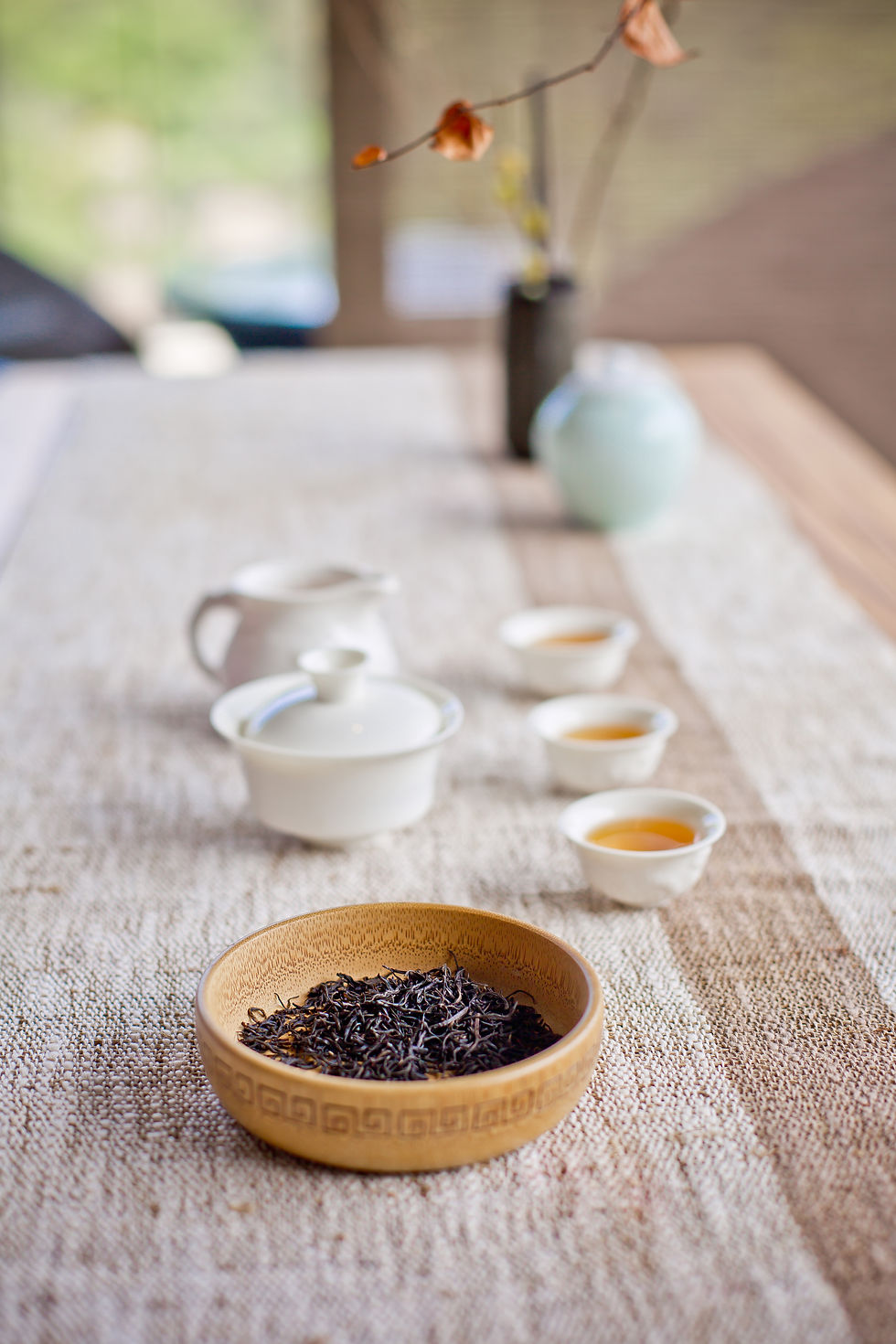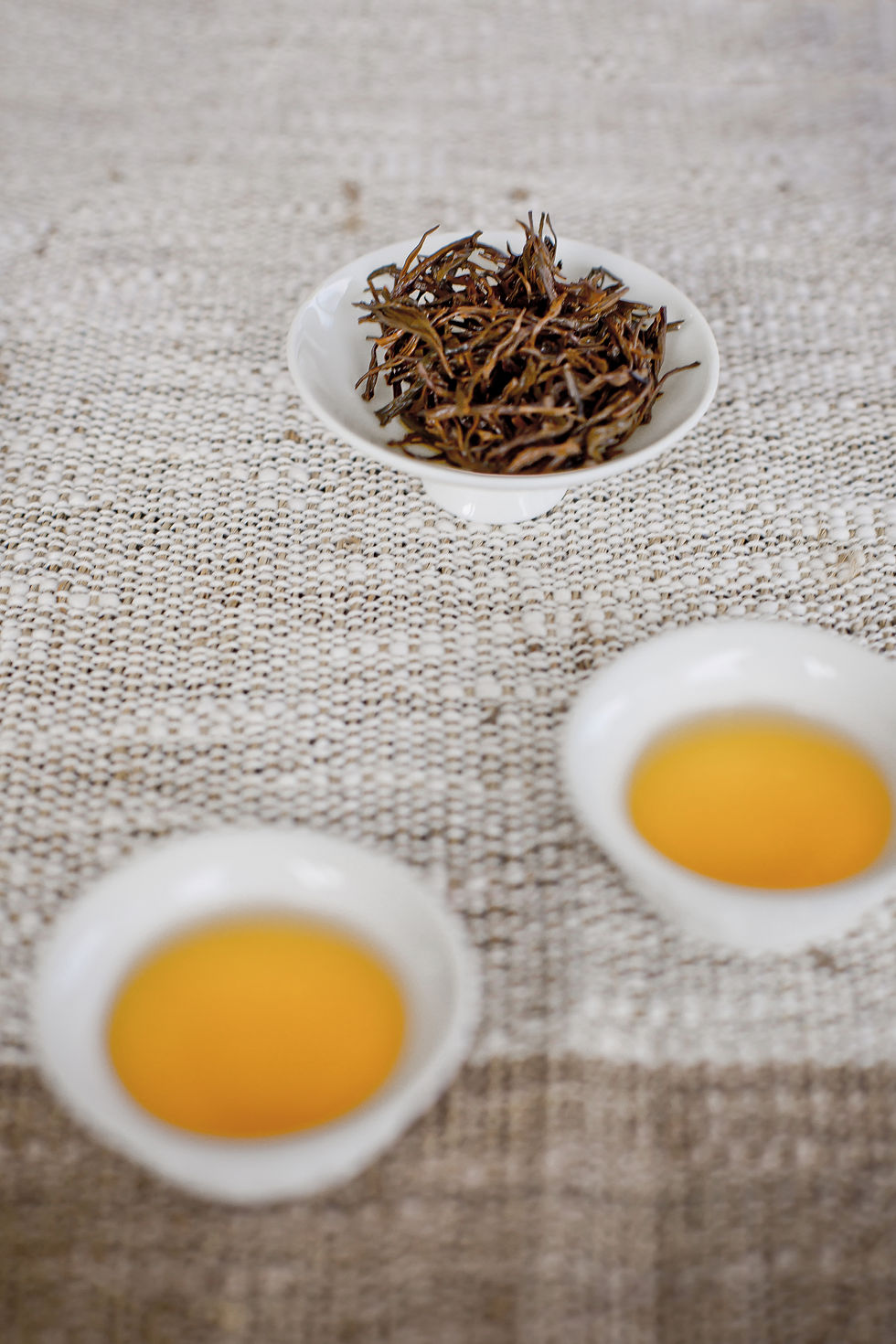The magical lapsang souchong - gently keep you fresh
- Taoan Admin
- Nov 12, 2022
- 4 min read
The lapsang souchong (Zhengshan Xiaozhong正山小种)originated in the Wuyi Mountains during the Qing dynasty, although there are earlier examples of smoked teas. Purportedly, lapsang souchong was first created in 1646, as civilians in the Wuyi Mountain areas fled from Qing soldiers who were advancing through the area on their Manchu unification campaign against the Southern Ming. Before they fled, to avoid spoilage of newly plucked leaves, batches were quickly dried over fire and buried in sacks. Afterwards, despite the odour, the tea leaves were shipped and sold to the Dutch traders. At the time, the months-long journey from China to Europe necessitated preservation methods and the partial oxidation of this Wuyi tea, an oolong tea graded as bohea or souchong, was better able to preserve its quality. The smoky souchong tea sold and the Dutch returned to request more.

The trade name would later become lapsang souchong from the Fuzhou dialect: La (pine) Sang (wood) with souchong meaning "small sort" referring to the leaves used. Prior to the British East Indian Company's adoption of the terms black and green to categorize teas, the tea leaves coming from the Wuyi Mountains area were referred to as bohea, with souchong (小种) referring to a different grade. Before lapsang came into use, the term smoky souchong was used to describe this tea leaf.
Preparation, flavour and aroma
Like other black teas, lapsang souchong is brewed with water at a temperature that is a little less than boiling, 95 °C (203 °F).
The aroma of the dry leaves is described as having intense empyreumatic notes reminiscent of bacon while the liquor is known for its lingering smoky flavour. Other flavours associated with lapsang souchong include wood smoke, pine resin, smoked paprika, dried longan, and peated whisky. It lacks the bitterness that can come with other black tea so lapsang souchong is not sweetened with sugar or honey and can be brewed strongly. It is a full-bodied tea that can be prepared with or without milk.
The aroma of lapsang souchong is derived from a variety of chemical compounds. The two most abundant constituents of the aroma are longifolene and α-terpineol. Many of the compounds making up the aroma of lapsang souchong, including longifolene, originate only in the pine smoke and are not found in other kinds of tea.

Benefits of drinking Lapsang Souchong
1. Support body fluid and clearing
Drinking black tea in summer can quench thirst and cool down because the polyphenols, amino acids, pectin, etc. in the tea react chemically with the saliva and stimulate the secretion of saliva, which makes the mouth feel moist and cool; Alkaline controls the temperature center of the hypothalamus to regulate body temperature. It also stimulates the kidneys to support the excretion of heat and dirt and maintain the physiological balance in the body.
2. Anti-inflammatory and bactericidal effect
The polyphenolic compounds in black tea have anti-inflammatory effects, and experiments have found that catechins can combine with single-celled bacteria to coagulate and precipitate proteins, thereby inhibiting and eliminating pathogenic bacteria. Therefore, it is beneficial for patients with bacterial diseases and food poisoning to drink black tea. Folks also often use strong tea to smear wounds, bedsores and fungal foot infection.
3. Detoxification effect
According to experiments, theophylline in black tea can absorb heavy metals and alkaloids and precipitate and decompose. This is a boon for modern people whose drinking water and food are polluted by industry.
4. Refreshing effect
It has been found through medical experiments that the caffeine in black tea excites the nerve center by stimulating the cerebral cortex, which help with refreshing and concentration of thinking, which in turn makes the thinking response sharper and memory enhancement; it also has an exciting effect on the vascular system and the heart, strengthening Heartbeat, so as to speed up blood circulation to facilitate metabolism, and at the same time help with sweating and diuresis, thus accelerating the excretion of lactic acid (substance that makes muscles feel tired) and other old waste substances in the body through a two-pronged approach to achieve the effect of eliminating fatigue.
5. Diuretic effect
Under the combined action of caffeine and aromatic substances in black tea, the blood flow of the kidneys is increased, the glomerular filtration rate is increased, the renal microvessels are expanded, and the reabsorption of water by the renal tubules is inhibited, thus contributing to the increase of urine output. This is beneficial to eliminate lactic acid, uric acid (related to gout), excessive salt (related to high blood pressure), harmful substances, etc. in the body, as well as to relieve edema caused by heart disease or nephritis.
In addition, black tea also has the functions of preventing caries, strengthening the stomach, improving digestion, delaying aging, lowering blood sugar, lowering blood pressure, lowering blood lipids, anti-cancer, and anti-radiation. If you drink it before sports that require physical strength and stamina (such as marathon running), because the caffeine in tea has a refreshing effect, it can also support the body to burn fat to supply heat and retain liver vinegar during exercise, therefore it makes people feel even better and more staying power.

Comments